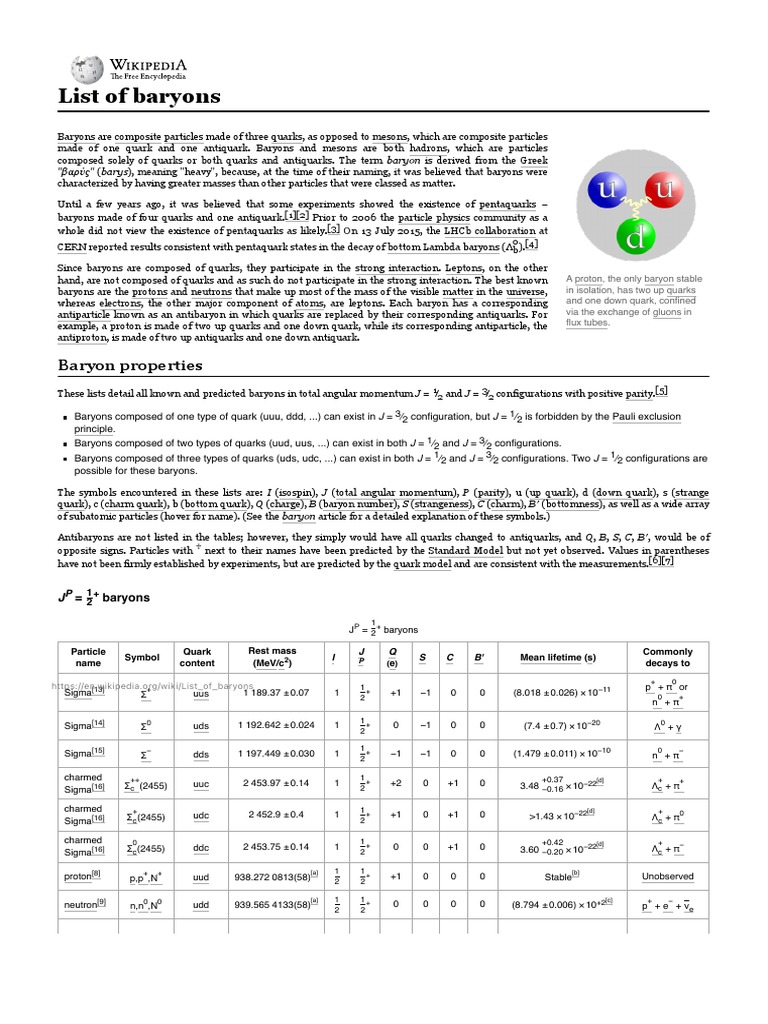The search for baryons, the fundamental constituents of matter, has captivated physicists for decades. Baryons, which include protons and neutrons, are composite particles made up of three quarks held together by the strong force mediated by gluons. Their essential role in the composition of atomic nuclei underscores their significance in the understanding of matter and the universe. However, despite their pivotal role, baryons have often been elusive, leading to an array of inquiries into their distribution, properties, and the surrounding implications of their existence.
In the annals of physics, the concept of baryons emerged alongside the development of the quark model in the 1960s by Murray Gell-Mann and George Zweig. The classification of baryons stems from their baryon number, which is defined as the number of baryons present in a system. Baryons inherently possess a baryon number of one. This category of particles succinctly encapsulates the complexities of the strong interaction, a fundamental force that governs the behavior of subatomic particles within atomic nuclei.
From decades of theoretical and experimental investigations, a common observation emerges: baryons seem to be present in lesser abundance than anticipated in the universe. The early universe, immediately after the Big Bang, contributed to the formation of numerous baryons. However, as the cosmos expanded and cooled, numerous processes led to the annihilation of matter and antimatter, rendering a mere asymmetry that favored baryons. Consequently, the observable universe is comprised predominantly of baryonic matter, yet the baryonic density is approximately one-fifth of the total matter density inferred from cosmological measurements.
To comprehend the apparent scarcity of baryons, one is compelled to delve into the concept of dark matter—a perplexing revelation that accounts for a significant portion of the universe’s total mass-energy content. The dark matter hypothesis posits that while baryonic matter constitutes stars, galaxies, and planets, the majority of the universe’s mass consists of non-baryonic material that interacts only through gravity and potentially the weak force. Yet, the curious question remains: where are the baryons? This inquiry delves deeper into the medium through which baryons interact and the phenomena that obscure them.
The study of baryons is further obfuscated by the nature of their interactions within nuclear matter. Investigations into Quantum Chromodynamics (QCD)—the theory of the strong interaction—illustrate the complexity of modeling baryonic states. Baryons do not exist suddenly or individually; rather, they are often bound into complex arrangements. They manifest in resonances and states that challenge our understanding of their fundamental properties and interactions. Evidence for baryons often surfaces under extreme conditions, such as within neutron stars or during high-energy collisions in particle accelerators.
Another integral aspect in the pursuit of baryonic exploration is the examination of the cosmic microwave background (CMB) and the large-scale structure of the universe. Observations suggest baryons are not only present in galaxies but also in intergalactic space, possibly forming vast reservoirs in cosmic filaments. The processes of baryonic cooling pursuant to these environments introduce procedures like star formation, influencing galactic evolution and the accessibility of baryons. Current astrophysical models aim to reconcile these phenomena, exploring their feedback mechanisms and contributions to cosmic structure.
Recent advances in observational technology have allowed for further probing into the baryon distribution across the observable universe. Techniques such as 21 cm line observations and gravitational lensing have yielded insights into the presence of baryons, revealing them not only concentrated in stars but also in diffuse gas. This burgeoning discipline of cosmic archaeology is pivotal, unveiling the intricate web woven by baryons throughout the expanse of the cosmos.
The intersection of baryons with fundamental physics extends beyond their mere localization; it converges with the exploration of symmetry breaking and the hunt for hypothetical particles, such as axions, which may play a vital role in the balance of baryonic and dark matter in the universe. The elusive nature of baryons serves as both a challenge and an allure, encouraging physicists to consider new paradigms in particle physics and cosmology.
Furthermore, theoretical frameworks like supersymmetry and string theory introduce novel dimensions for examining baryon properties and behaviors. These hypotheses suggest that baryons may not only exist in their conventional forms but also in exotic states resulting from higher-dimensional interactions. Such considerations orchestrate an evolution in thought—heralding an era where baryons could be fundamental players in physics beyond the Standard Model.
In conclusion, the quest to discern the whereabouts of baryons transcends the mere identification of particles that constitute matter. The intrinsic complexities of baryons, involving their interrelations within the cosmic tapestry, beckon deeper inquiries into fundamental physics. Their implications stretch from the microcosmic interactions of quarks and gluons to the vast cosmic structure of the universe itself. Yet, as observations continually evolve and theoretical frameworks expand, the question remains largely unanswered: where are the baryons? This query not only embodies a fascination with the nature of matter but also challenges the limits of human understanding in the grand narrative of our universe.












